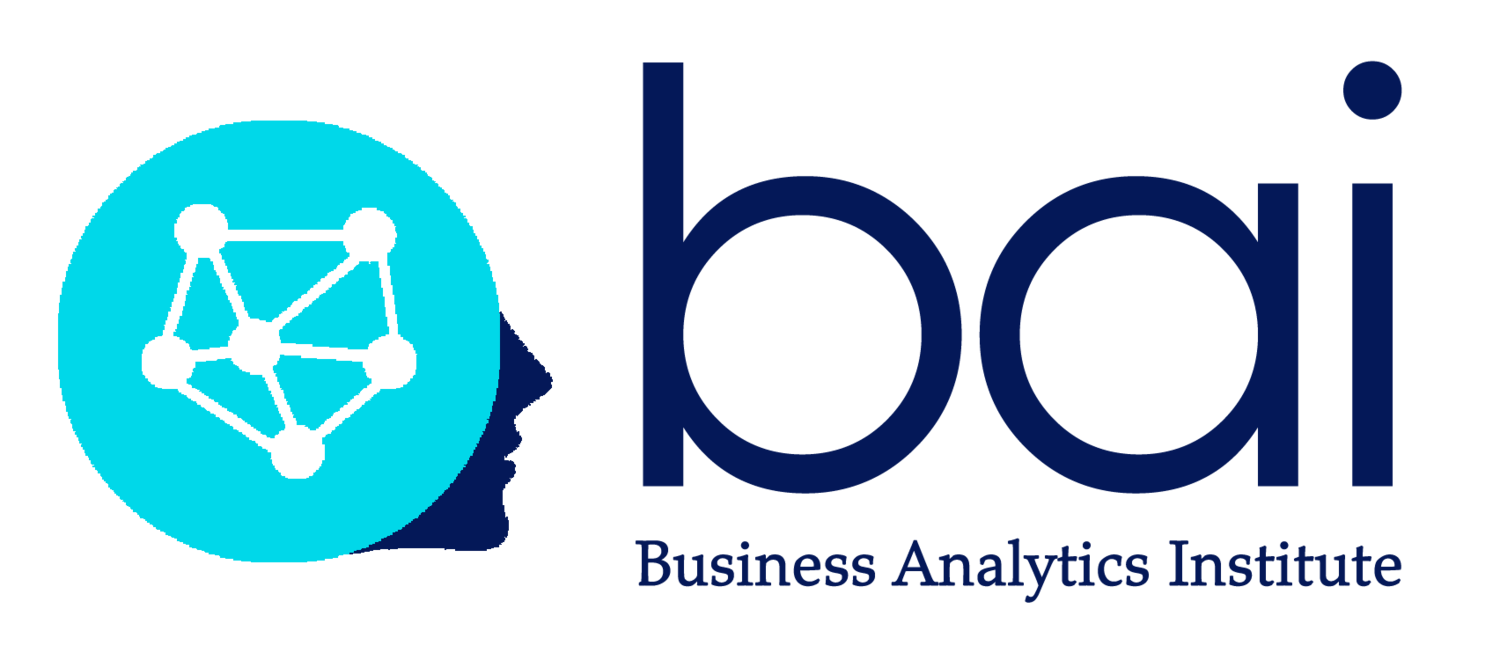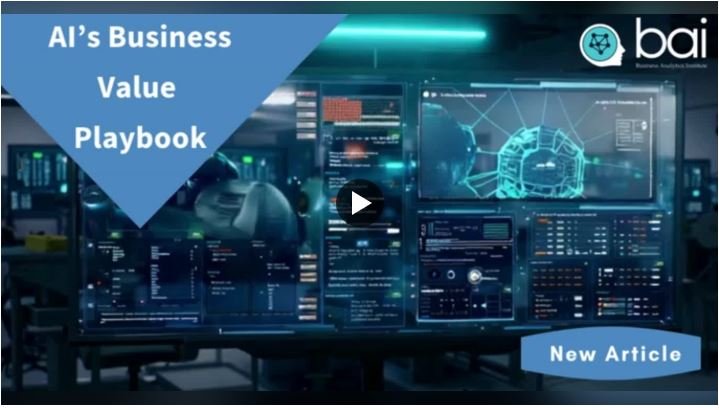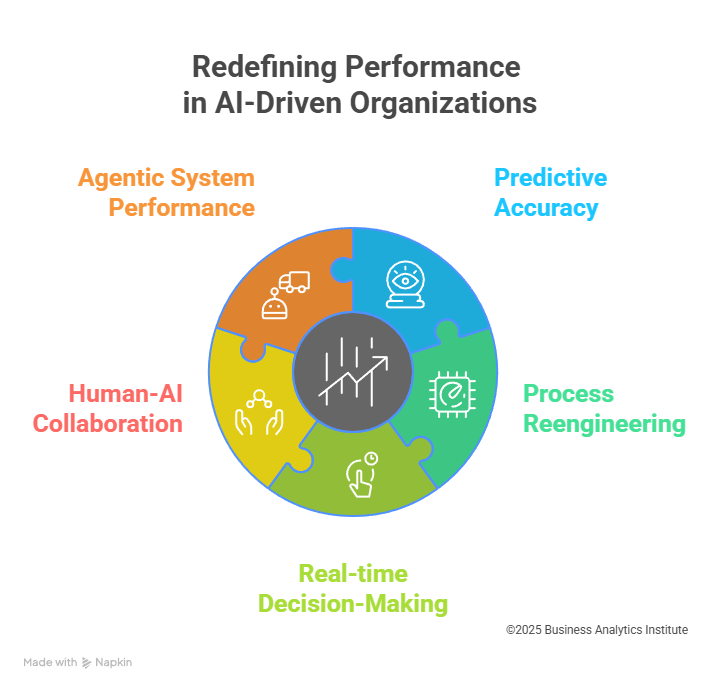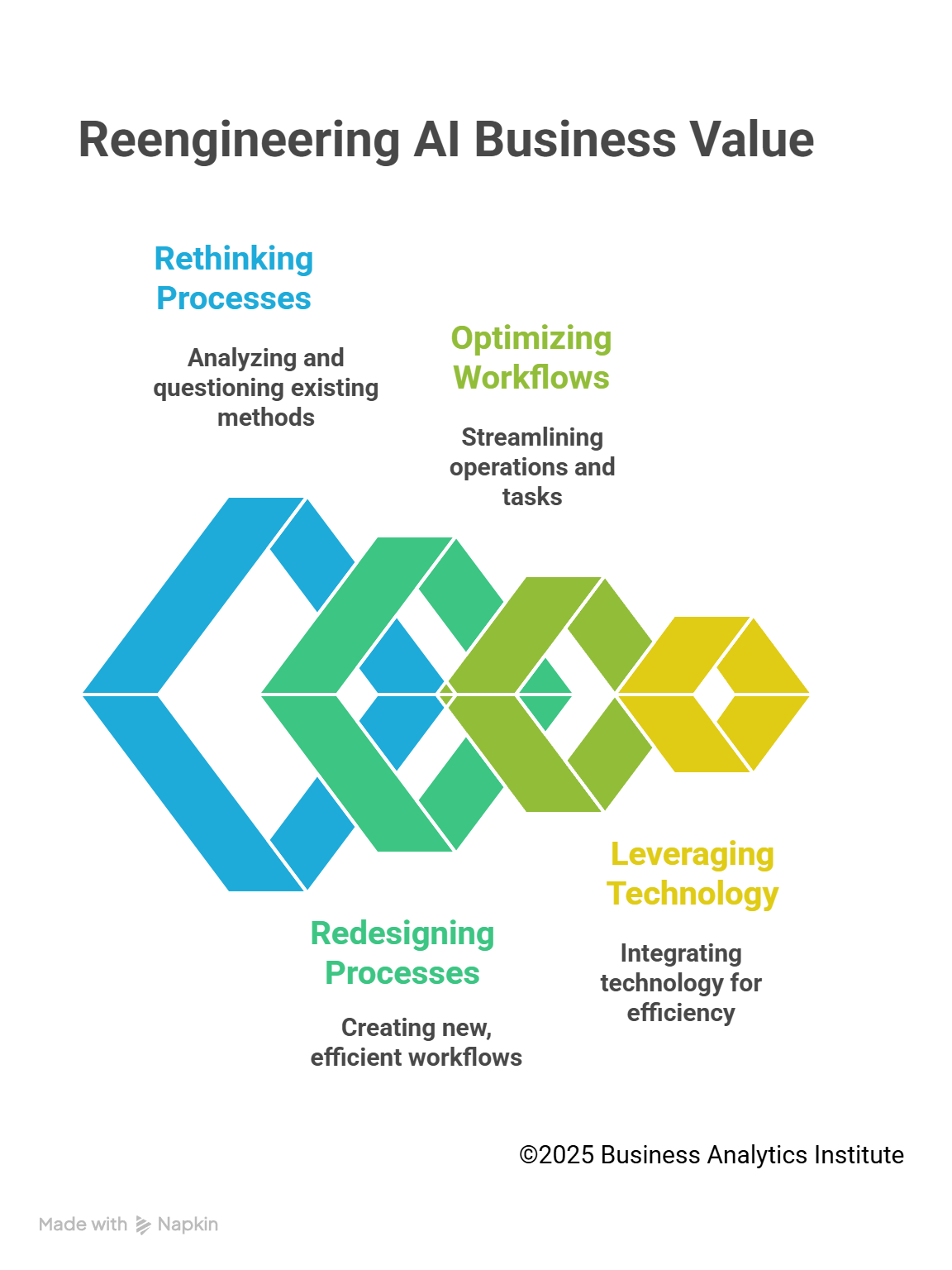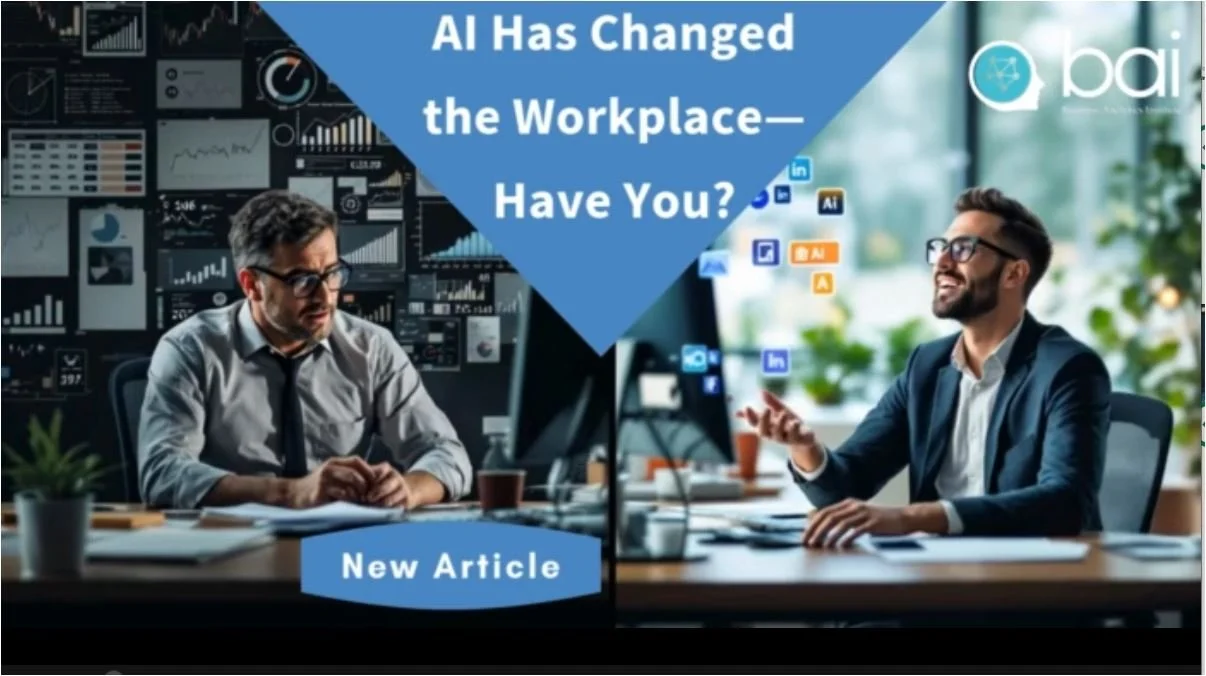AI's Business Value Playbook
The stakes for artificial intelligence have never been higher. Organizations worldwide poured billions into AI initiatives in 2025, yet a fundamental challenge persists: most struggle to demonstrate measurable business value. As we enter 2026, executives face a defining question that will separate the market leaders from those left behind—how do you both demonstrate and maximize the return on your AI investments?
In the latest McKinsey Global Survey, 78 percent of respondents say their organizations use AI in at least one business function, up from 72 percent in early 2024 and 55 percent a year earlier. (McKinsey & Company, 2025). Meanwhile, AI business usage is accelerating: 78% of organizations reported using AI in 2024, up from 55% the year before (Stanford HAI, 2025).
But adoption statistics tell only part of the story. More than 80 percent of respondents say their organizations aren't seeing a tangible impact on enterprise-level EBIT from their use of gen AI. The gap between deployment and business value defines today's AI challenge.
Traditional business metrics focused on cost reduction and revenue growth. Today's AI-driven organizations measure success through fundamentally different indicators:
Predictive accuracy in real-world business contexts
Process reengineering capabilities that transform workflows
Real-time decision-making quality across operations
Human-AI collaboration effectiveness throughout teams
Agentic system performance on autonomous tasks
This shift from simple implementation to rigorous evaluation, from deployment to the demonstration of value, separates those who invest in AI from those that leverage the tangible benefits.
From Measuring Models to Measuring Practic
While debates about foundation models continue, manufacturing and industrial organizations are proving AI's business value through measurable operational improvements. They're not just talking about AI ROI—they're documenting it with metrics that matter.
Schneider Electric: Scaling Analytics Across Manufacturing Operations
Schneider Electric, the global leader in digital transformation of energy management and automation, has demonstrated how AI-driven analytics can deliver measurable results at scale. The company leveraged AVEVA Insight and AVEVA PI System as a standard platform to collect, store, and contextualize IT/OT (Information Technology/Operational Technology) data across 25 manufacturing plants (AVEVA, 2024).
This comprehensive implementation delivers real-time advanced analytics that enable data-driven decision-making across the entire manufacturing network. The results represent a fundamental transformation in operational excellence:
Cost reduction, maintenance optimization, and energy carbon emission reduction improving from 10% to 60% across different use cases and plant locations (AVEVA, 2024). These improvements demonstrate how AI analytics create value across multiple dimensions simultaneously—from operational efficiency to sustainability targets.
What Schneider Electric measures: The company tracks operational metrics including equipment performance, energy consumption patterns, maintenance cycle optimization, production efficiency, and carbon emissions in real-time. By standardizing their data platform across 25 plants, Schneider Electric created the foundation for consistent measurement and continuous improvement.
The integrated approach combines edge-based sensor data with cloud-based AI analytics, enabling the company to identify patterns, predict failures, and optimize processes that would be impossible to detect through traditional methods. This represents the evolution from reactive to predictive manufacturing operations.
SAP: Quantifying Productivity Across the Enterprise
Joule's analytical insights feature delivers tailored, on-demand decision support directly within any SAP business application workflow, resulting in an 80 percent reduction in steps to get analytical insights. This represents a fundamental shift in how knowledge workers access and utilize data.
Information searches are up to 95% faster, and navigation and transactional tasks are completed up to 90% faster with SAP's AI integration (Bramasol, 2025). These efficiency gains translate directly to productivity improvements across finance, HR, supply chain, and operations functions.
What SAP measures: Task completion time, workflow step reduction, user adoption rates, and business outcome improvements. Business users can ask Joule natural language questions such as "Who were the top three sales managers last month?" and get immediate, context-rich insights, enabling them to make more informed decisions faster (SAP, 2025).
The Rise of Agentic AI: New Systems Demand New Metrics
The evolution from generative AI to agentic AI systems represents a fundamental shift in value creation and measurement.
What makes agentic AI transformative?
Agentic AI systems can autonomously plan, reason, and execute multi-step workflows. Unlike traditional automation that follows predetermined rules, agentic systems understand business contexts, adapt to changing conditions, and improve through experience.
Measurable business impact:
More than half of companies (51%) have already deployed AI agents, with 62% expecting more than 100% ROI on the technology and an average expected return of 171% ROI on their investment. GenAI has proved profitable for these companies with an average return of 152%, with 62% of companies experiencing more than 100% returns from generative AI.
The adoption timeline is accelerating:
51% of companies have already deployed AI agents, and another 35% plan to deploy within the next two years, meaning by 2027, fully 86% of companies expect to be operational with AI agents. Nearly all (94%) believe they will adopt agentic AI more quickly than GenAI, with 55% strongly agreeing the transition will be quicker (PagerDuty, 2025).
Critical metrics for agentic systems:
- Autonomous decision-making rates and accuracy
- Self-correction capabilities and learning velocity
- End-to-end workflow completion without human intervention
- Cross-system orchestration effectiveness
- Time to optimal performance in new domains
More than half (52%) of companies expect agentic AI to automate or expedite 26% to 50% of workloads, with an average overall expectation of 36% of work tasks automated or expedited (PagerDuty, 2025).
The AI Skills Gap: The Critical Constraint
Even as AI capabilities accelerate, talent limitations remain the primary barrier to scaled deployment.
The magnitude of the challenge:
According to new research from Reuters AI spending In 2024 grew to over USD 550 billion, and there will be an expected AI talent gap of 50%. This represents not just a hiring challenge, but a fundamental skills transformation requirement.
Demand for AI roles is growing, as the rate of automation and technological advancements speed up. However, AI adoption remains uneven across companies, with many employees believing that the AI skill gap is an AI training gap (IBM, 2024).
Value Achitects
Organizations need AI architects—professionals who can seamlessly integrate and evaluate diverse AI approaches at the core of their business operations. These experts must understand the underpinnings and interdependencies of AI technologies: generative AI, predictive analytics, large language models (LLMs), natural language processing (NLP), machine learning (ML), deep learning, and reinforcement learning.
The training deficit:
According to a 2024 Randstad survey, respondents said that companies adopting AI have been lagging in training or upskilling employees on how to evaluate AI in their jobs, with gender and age divides in how well AI training adequately prepares workers (IBM, 2024).
Manufacturing's Measurement Advantage
Manufacturing organizations possess unique advantages in demonstrating AI value: decades of operational data, clearly defined processes, and established performance metrics.
The latest McKinsey Global Survey finds that organizations are beginning to take steps that drive bottom-line impact—for example, redesigning workflows as they deploy gen AI and putting senior leaders in critical roles, such as overseeing AI governance.
Emerging Best practices:
The one with the most impact on the bottom line is tracking well-defined KPIs for gen AI solutions, while at larger organizations, establishing a clearly defined road map to drive adoption of gen AI also has one of the biggest impacts.
Respondents working for larger organizations are more than twice as likely as their small-company peers to say their organizations have established clearly defined road maps to drive adoption of gen AI solutions and to have established a dedicated team to drive gen AI adoption (McKinsey & Company, 2025).
The Path Forward: From Deployment to Demonstration
Twenty-one percent of respondents reporting gen AI use say their organizations have fundamentally redesigned at least some workflows, and this redesign of workflows has the biggest effect on an organization's ability to see EBIT impact from its use of gen AI (McKinsey & Company, 2025).
The question isn't whether AI will transform your industry—it's whether you'll possess the skills to measure, prove, and maximize that transformation.
Organizations succeeding with AI share three characteristics:
- They measure what creates value, not what's convenient
- They evaluate continuously, not just at launch
- They prove impact systematically, not anecdotally
Closing the AI skills gap is essential to help organizations prepare for the future of work and accelerate innovation (IBM, 2024). In a world where AI spending exceeds $550 billion but value capture remains challenging, evaluation expertise represents the ultimate competitive differentiator.
The 2026 BAI Winter School provides the frameworks, methodologies, and professional network to master AI evaluation—the critical skill separating those who deploy AI from those who prove its business value.
Ready to become indispensable in your organization's AI journey?
Your Competitive Edge: The BAI Winter School
This is precisely why the 2026 BAI Winter School on AI and Agentic Systems in Mysore, India (January 28–February 7, 2026) represents an extraordinary opportunity for professionals seeking to bridge the gap between AI capabilities and business value demonstration.
What You'll Master:
Evaluation Framework Design for AI and agentic workflows
Business Value Metrics for executive communication
ROI Calculation Models specific to AI investments
Contextual AI Applications across industries
Agentic System Architecture and deployment
Manufacturing AI Use Cases including predictive systems
Cross-Functional Implementation strategies
** The future belongs to those who can measure it.**
References
AVEVA. (2024). Schneider Electric: IT/OT Analytics @scale for Manufacturing Performance & Sustainability. AVEVA World 2024. https://www.aveva.com/en/perspectives/presentations/2024/schneider-electric--it--ot-analytics--scale-for-manufacturing-performance---sustainability/
Bramasol. (2025, January 28). Update on SAP AI initiatives going into 2025. Ignite Possible. https://ignitepossible.bramasol.com/blog/update-on-sap-ai-initiatives-going-into-2025
IBM. (2024). AI skills gap. IBM Think Insights. https://www.ibm.com/think/insights/ai-skills-gap
McKinsey & Company. (2025, March 12). The state of AI: How organizations are rewiring to capture value. https://www.mckinsey.com/capabilities/quantumblack/our-insights/the-state-of-ai
PagerDuty. (2025, April 1). 2025 agentic AI ROI survey results. https://www.pagerduty.com/resources/ai/learn/companies-expecting-agentic-ai-roi-2025/
SAP. (2025, July). SAP Business AI: Release highlights Q2 2025. SAP News Center. https://news.sap.com/2025/07/sap-business-ai-release-highlights-q2-2025/
Stanford University Human-Centered Artificial Intelligence. (2025). The 2025 AI Index Report. https://hai.stanford.edu/ai-index/2025-ai-index-report
**Dr. Lee Schlenker **is the Director at The Business Analytics Institute, where hisDr. Lee Schlenker is the Director at The Business Analytics Institute, where his research focuses on the intersection of artificial intelligence, organizational transformation, and the future of work. For more information about the BAI Winter School or to connect, visit baiwinter.com or contact info@baiwinter.com.
